BY BONNIE ROSENSTOCK | The Day of the Dead, the traditional Mexican holiday that honors family members and others who have died, took place from Fri., Oct. 27, to Sun., Oct. 29, in the East Yard of St. Mark’s Church-in-the-Bowery.
This year, in addition to booths, food, music and the ofrenda (offering) altar of candles, photographs, food, flowers and skulls, Mano a Mano, the nonprofit that celebrates Mexican culture, helmed by executive director Juan Aguirre, shared their holiday with Naming the Lost Memorial and other organizations to also commemorate the lives of those lost to COVID-19.
Jenny Romaine, the New York City-based director, designer, puppeteer and educator, who founded the Obie-winning Great Small Works, explained that the public-art NTLM was founded during the lockdown “when 100,000 people had died from COVID in the U.S. and word from on top was to drink bleach.
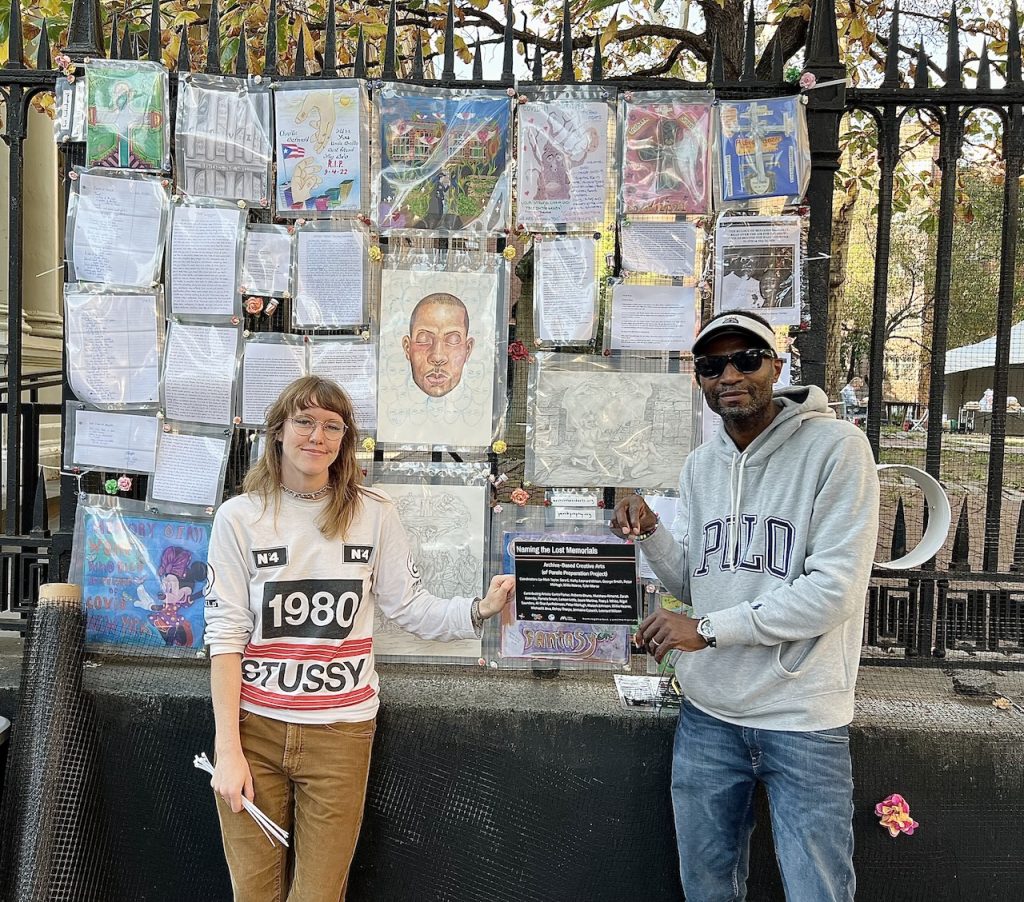
“During lockdown, every month we were doing another memorial where we named the COVID dead — bus drivers, transit workers, school teachers, people who worked in hospitals,” she said. “We launched with a bunch of neighbors, artists, in every borough with all the workers that weren’t receiving any benefits.
“Then the Mellon Foundation approached us and said, ‘We think this should continue,’ so we did a giant memorial with 30 community groups at Green-wood Cemetery this last May. This one we’re doing is connected to Mano a Mano’s Day of the Dead.
“We used these funds, in partnership with City Lore, to pay artists in different communities to create the response from their communities,” she continued. “You have people who were incarcerated during COVID and also currently and the art they made about COVID. Homeless artists and people living on the Bowery did a panel. Oye Project in Bushwick did a thing with Dominican seniors.”
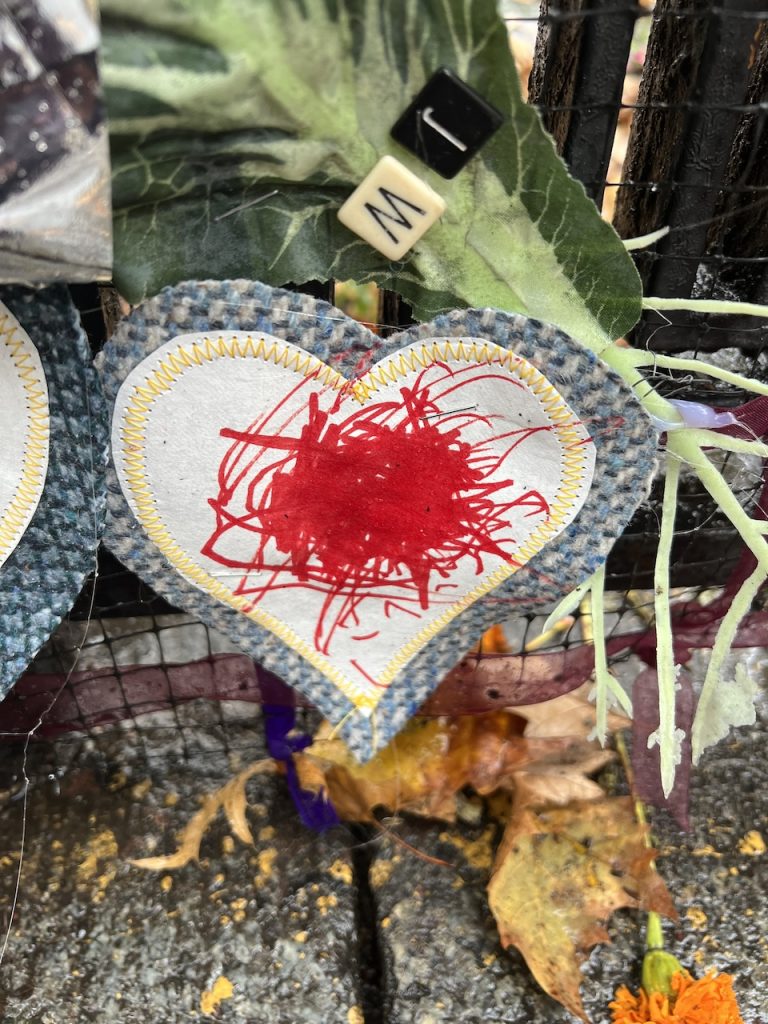
Inside Change, an organization that focuses on social justice, food equity and arts education, created a panel of messages written on heart-shaped waterproof paper, with additional adornment of fake cabbage leaves, ribbons, scraps of wool and buttons, hot-glued on lawn chair webbing fabric.
Executive Director Carol Prud’homme Davis said, “Sally Young, the lead artist, and I worked together to create a concept, which was to lay out materials for people to come into the Community Garden at Sixth Street and Avenue B, which Sally is involved with.”
“We have outdoor space there, as well as community involvement and access,” said Young. “There was room to spread out materials and electrical outlets for hot-glue guns that helped to hold together our 3D flowers. The flower workshops produced more than I could imagine. We also had an amazing amount of people who filled in the hearts with letters about a loved one. All in all, this project, which spanned almost six months, was a collaborative effort with the help of many communities, who planned to stop by to make flowers as well as drop-ins that joined in. COVID affected us all. I think this project symbolizes our experiences.”
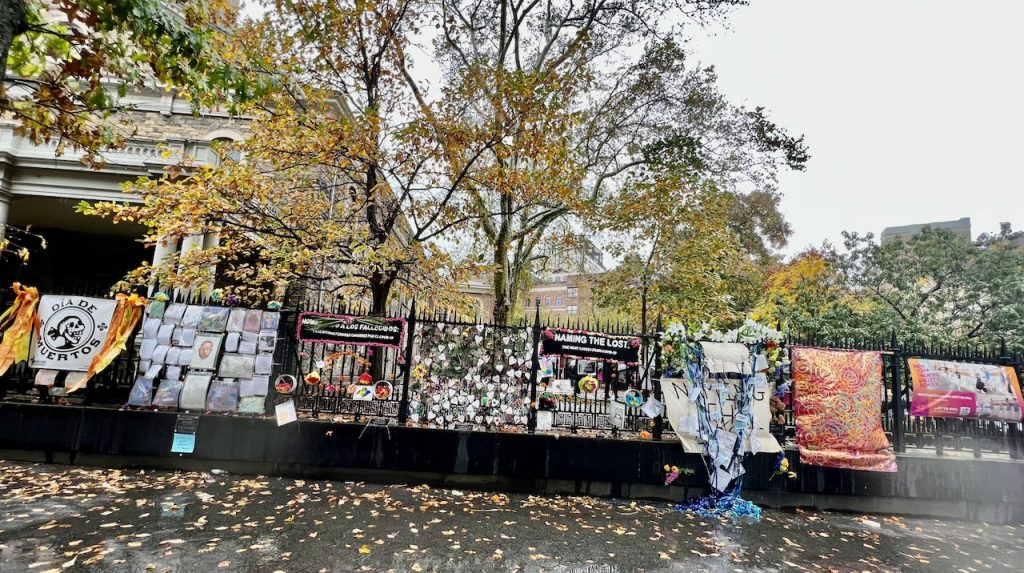
“Every person 4 years or older knew what COVID was and felt their experience,” Prud’homme Davis declared. She pointed to the blood-like scribbles on a heart, done by a 4-year-old, who told her, “I know COVID. It made my heart bleed.” On another, created by an 8-year-old whose mother died, you can see all the coded messages he was giving her.
When Tyler Morse and Willie Kearse, who are part of Archive-Based Creative Arts, a project of the Parole Preparation Project, were invited to NTLM, they reached out to members of their creative workshops in Upstate New York prisons, like Bedford Hills, Fishkill, Woodbourne, Marcy and Five Points, to spread the word they were doing a memorial to honor not only those who died in prison during the pandemic but also to honor their experiences of survival while incarcerated and their experiences of loss.
They asked for a brief paragraph, a poem, any kind of art related to the effects of COVID.
“We tried to help them understand the importance of this,” Kearse said. “Unfortunately, I was one of those people inside during COVID, so I understand all the things we were up against, like not having PPE equipment, and not being able to be isolated, so as not to get infected. It was very hard. A lot of the effects are still going on. The medical staff probably can’t offer the right care, and this is affecting the other elements they deal with.
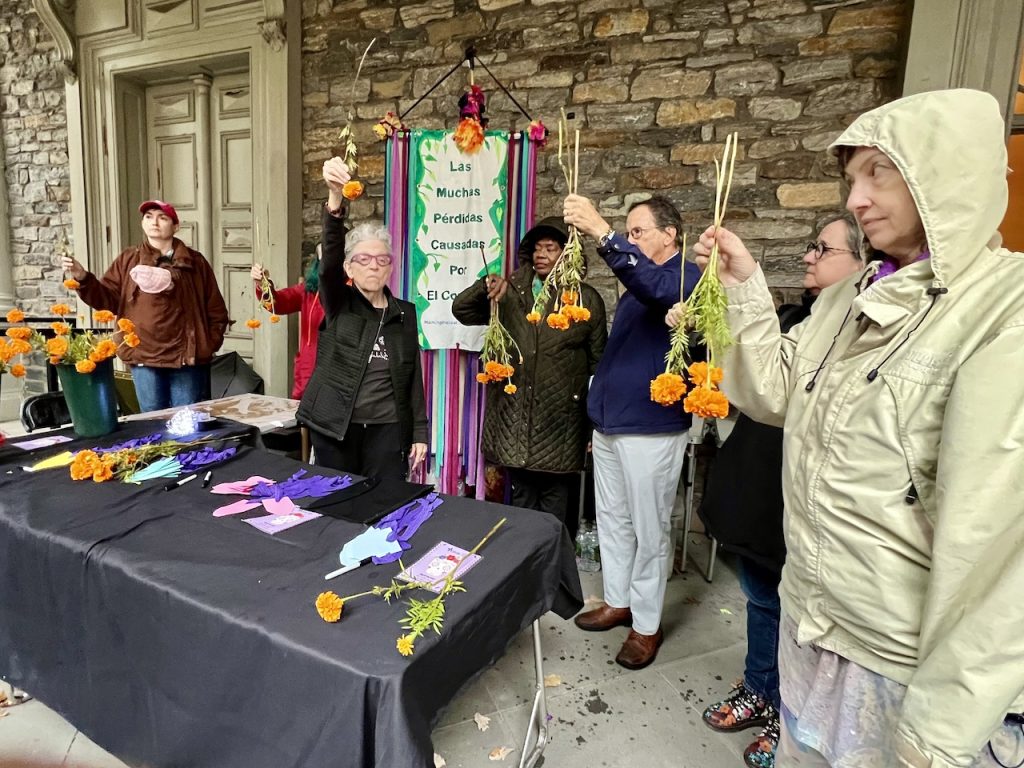
“The overall message we would like to send,” he added, “is that we are human beings suffering from the same pandemic as everyone else but not being recognized enough to get the proper care. We want to make sure their struggles with COVID aren’t forgotten.”
The Activation Ceremony on Oct. 29 for the panels created by Inside Change and St. Mark’s Church, was presided over by Kay Turner, folklorist and performer. (Activation Ceremony for Parole Participation Project took place the day before.) Marigolds were held upside down.
“It’s a very old flower in the Americas,” Turner explained. “The flower represents the sun of life. Put it into your nose and inhale deeply; it has a very musky odor. The Aztecs believed the souls of the dead would rise up out of the odor of the marigolds. Present these flowers to the dead to whom you are naming today. Say out loud who you are naming or say it to yourself.”
Then the rain-drenched participants waved the flowers over the two panels. Additionally, the name of the lost was written on a paper attached to the flowers and placed at the base of the flower ceremony altar in the East Yard. To end the ceremony, Turner read a poem in English by an Aztec poet king before the conquest of Mexico. Aguirre recited it in Spanish.
The installations, which span the front fence of the church, will be up until Sun., Nov. 12.

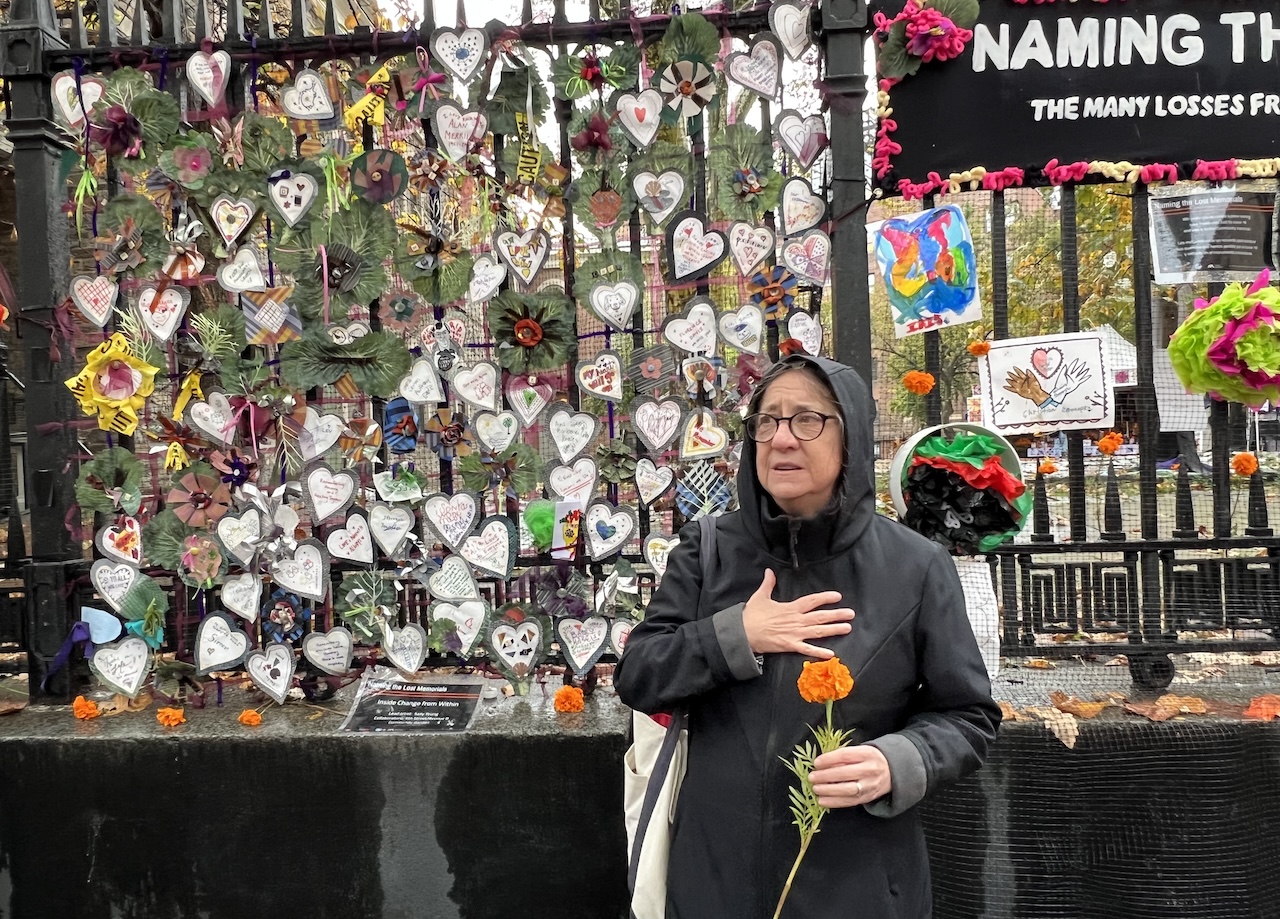
Be First to Comment